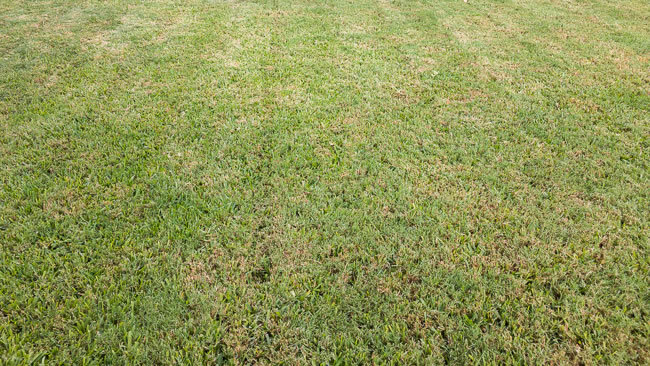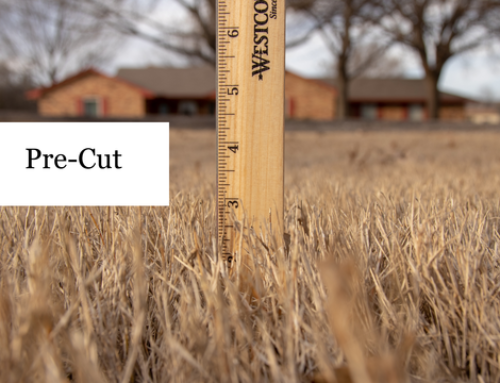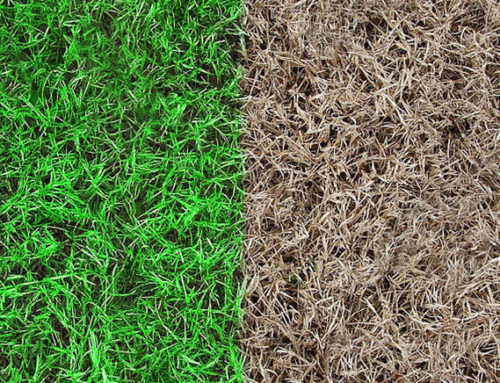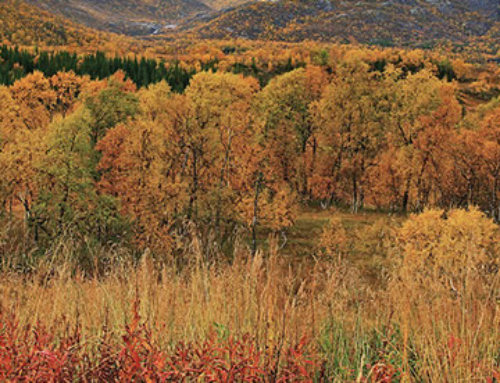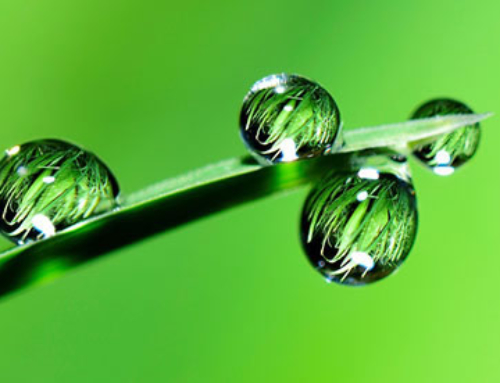There are many possible reasons for brown spots in lawns: dull mower blades, animal urine, drought, bugs, and debris (to name a few). If, however, you are experiencing brown spots just after a mowing service, there is a simple explanation. The grass is experiencing summer lawn stress.
While not the same as what human’s face, all organisms face stress. Stress is a natural reaction to a demanding or threatening circumstance. One of the biggest summer lawn stress factors is heat. North Texas summers are typically dry and hot, with temperatures over 100 degrees. This climate places a tremendous amount of stress on lawns, causing plants to collect and store as much water as possible.
Consider the Cactus
When it comes to surviving dry climates, the cactus is king. To be able to thrive in the desert, the cactus’ root system collects water and stores it in the plant’s body (the stem). The plant then distributes the water in such an efficient way that it can go years without receiving more water.
In the same way as a cactus, grass collects and stores water. Unlike the cactus, grass does not have thick skin or spines to protect itself. This is good news for us, and bad news for the grass.
Mowing – A Cause of Summer Lawn Stress

The lawn on top has been mowed too short.
Grass grows both under the ground and above the ground. Below the ground, the plant’s root system continually expands its territory, seeking water and nutrients. Above ground, the grass extends its blades outward to collect more sunlight for photosynthesis. At the same time, its stem grows upward so that it can have plenty of nutrient and water storage. In reality, with an unlimited supply of water, nutrients, and sunlight, grass will grow unabated in all directions.
As homeowners, we do not want a lawn overrun with tall, wild grass; so, we are tasked with having to mow. The work is simple; but, it is important to not cut into the stem or remove all blades. This practice is commonly called “scalping the lawn,” and will create brown spots after a lawn mowing service.
When someone scalps a lawn, they are mowing the grass very short – much akin to a buzz cut on a human. When a lawn gets cut too short in the summer, the grass goes into shock. The lawn mower has reduced the plant’s ability to undergo photosynthesis and has released a significant amount of its water supply. The plant’s reaction is to either die completely, go temporarily dormant, or allow its outer edges to die so it can recover.
We sometimes see the same effect in lawns that are mowed bi-weekly. The reason is that the lawn is being scalped but at a higher height. The rule of thumb is not to cut the grass more than 1/3 its current height. This restriction is an acceptable amount of stress that won’t throw the plant into shock. What we often find is that lawns mowed bi-weekly are being cut more than ⅓, so we do not recommend mowing on this schedule in the summertime.
What to Do
Just as easy as it is to diagnose summer lawn stress, the solution is just as simple.
- Make sure your lawn is receiving at least 1 inch of water per week.
- Make sure your lawn is receiving adequate sunlight.
- Do not scalp the lawn.
- Remove at most 1/3 of the grass’ height at each mow.
- Mow on a frequent and consistent schedule.
The good news is that summer lawn stress caused by mowing is temporary. If the lawn receives enough water and sunlight, the brown spots will fade quickly. The important thing is to adjust your mowing height and frequency in the future. If you will follow these mowing guidelines, you will have a healthier and greener lawn.
Further Reading: Weed Xtinguishers’ Mowing Service | Weed Xtinguishers’ Summer Lawn Watering Guidelines

